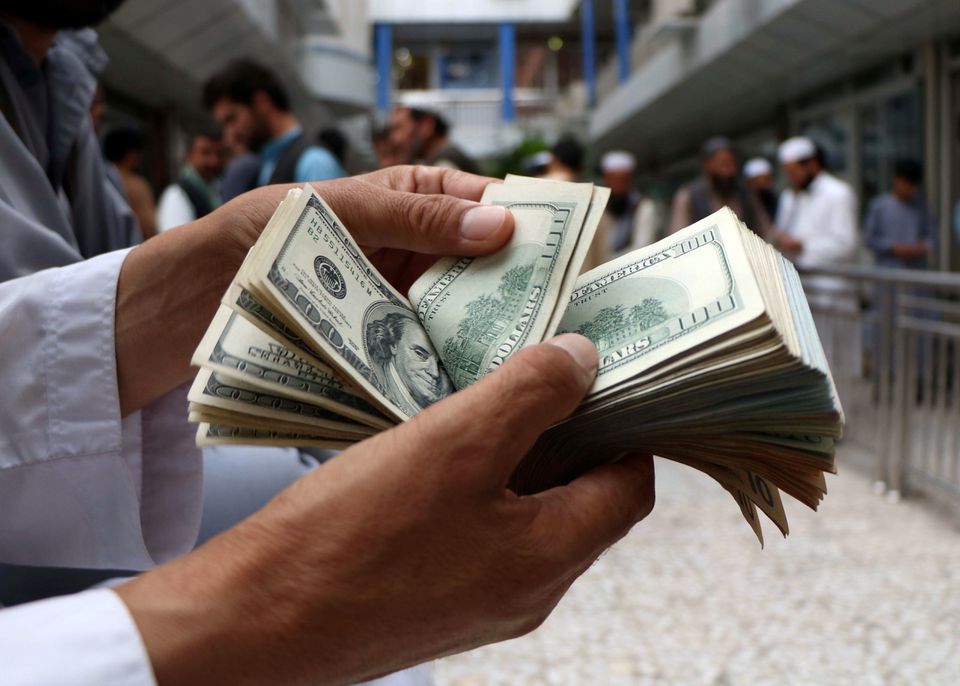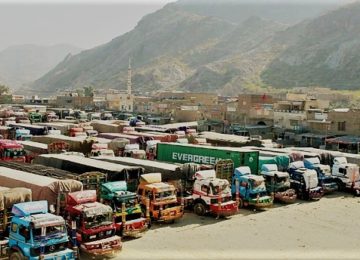But it’s just going to go in Taliban pockets, critics say.
The decision by the United States to release $3.5 billion of Afghanistan’s central bank reserves has sparked fears that the money will hand a jackpot to the Taliban, which have presided over the country’s slide into dire economic crisis since they took over more than a year ago. The money is to be transferred to an international financial institution based in Switzerland and administered by a group including former Afghan central bankers.
After months of back-and-forth conversations over whether—and how—to disburse at least a portion of the funds belonging to the former Afghan government that were frozen in the United States after the Taliban took over last year, the Biden administration has hit on a solution that pleases no one.
The United States has set up the Afghan Fund at the Bank for International Settlements in an effort to kick-start the economy before the winter exacerbates alarming levels of hunger and poverty. The U.S. Treasury said the money will help pay Afghanistan’s debts and bills, keeping the economy afloat, while critics said it will simply transfer liability for payments from the Taliban to the Afghan Fund.
Omar Joya, an economist formerly with the World Bank and Afghanistan’s central bank, described the Afghan Fund as a “windfall” for the Taliban, saying it effectively pays their bills while relieving them of responsibility for managing an economy suffering from the political shock of the republic’s fall as well as natural disasters that have disrupted agricultural production and supply chains.
“Transferring part of the reserves to a fund to finance humanitarian projects and reduce the fiscal pressures from the Taliban will not help much with the ongoing economic recession and crisis,” Joya said. “On the contrary, it will further support the Taliban leaders by easing fiscal pressures and providing them with windfall gains. Nothing will change for the poor. They will continue to cope with lack of jobs, no source of income, deprivation, soaring food prices.”
The Taliban, too, oppose the Afghan Fund, saying all central bank reserves—$7 billion held in the United States and $2 billion held in Europe and the Middle East—should be transferred to the central bank under their management.
“Foreign currency reserves belong to the people of Afghanistan and have been used for many years in light of the law for monetary stability, strengthening the financial system, and facilitating trade with the world,” said Habiburahman Habib, the Taliban’s economy ministry spokesperson. “Any action of the United States regarding the allocation, use, and transfer of the country’s foreign currency reserves is unacceptable, and we want to reconsider this matter.”
But the Taliban’s earlier brutality and their proven inability to govern since they took power ensured that the United States would not release the funds into the hands of a group run by terrorists. The Afghan government previously relied on international aid for around 80 percent of its revenue, but that has largely evaporated. Without income, people cannot buy staples, leading to documented reports of people selling children and body parts to feed their families. But the Taliban refused to comply with U.S. conditions for the release of the funds, including international anti-money laundering and counterterrorism financing measures, as well as independent oversight and auditing.
The Biden administration views the Afghan Fund as a sort of shock-absorber meant to keep the lights on and the credit rating passable. “The Afghan Fund will protect, preserve, and make targeted disbursements of that $3.5 billion to help provide greater stability to the Afghan economy. The Taliban are not a part of the Afghan Fund, and robust safeguards have been put in place to prevent the funds from being used for illicit activity,” the U.S. Treasury and State Departments said. “Disbursements from the Afghan Fund could include keeping Afghanistan current on its debt payments to international financial institutions, which would preserve their eligibility for development assistance, and paying for critical imports, such as electricity.”
But that still frees up funds for the Taliban, Joya argued. Under the current arrangement, the national electricity bill will be paid directly from the fund, meaning the Taliban can keep the money collected from customers by the state power company.
“The newly transferred $3.5 billion to the Afghan Fund must be recalled back and must remain with the frozen assets. They are supposed to function as foreign exchange reserves to facilitate payments for international transactions, not to fund or finance fiscal obligations or humanitarian operations,” Joya said.
The central bank’s assets were frozen when the Taliban took control on Aug. 15, 2021: As the country came under the control of sanctioned terrorists, business as usual was not an option. Ordinary people have not been able to access their own bank accounts, though some private banks have continued to operate payrolls and other functions. The World Bank has projected a decline in real GDP by one-third between the end of 2020 and the end of this year, saying around 70 percent of households cannot meet basic needs, including food.
The yearlong saga over the release of the funds has been controversial. Some Afghans accused the Biden administration of stealing from Afghanistan’s people. Many more were concerned the Taliban would find a way to seize the money, as they have seized much of the aid that has been funneled to the country since they took control. “It will be smoked inside a year, and then where will we be?” asked the head of a local charity, speaking anonymously, who described the Taliban pilfering international food and other aid over the past year.
The big debate is whether the fund is meant to fulfill traditional tasks of central bank reserves or act as a rainy day fund. Shah Mehrabi, a long-term member of the Supreme Council of Afghanistan’s central bank, said its priorities are inflation reduction and stabilizing the currency. Mehrabi is one of two Afghan economists on the four-strong board of the Afghan Fund; the other two are Swiss and American.
He said he wants to do auctions of U.S. dollars to the tune of $150 million a month to inject hard currency into the economy and take out afghanis, which are driving up prices. Aid salaries have injected some dollars into the economy, which have helped stabilize the currency, but they haven’t taken any local currency out, which is why inflation is still above 50 percent. But he has some conditions.
“Funds will only be released if conditions are met,” including halting a “brain drain” with the employment of competent technocrats to run the financial institutions, currency auctions, and independent monitoring, he said. “We will look at this as we go, and once we have access to economic data collected by the current regime, we will have a better idea.”
Abdullah Khenjani, a journalist and Afghanistan’s former deputy minister for peace, said the “unilateral” U.S. decision to set up the Afghan Fund “means that there is no common ground to seek and reach a rational decision with the Taliban regime,” which has not been held accountable for excesses like extrajudicial killings and banning education for girls.
Reserves are meant to backstop the banking system and the national currency, Khenjani said, not to pay power bills. “In the long term, it will be a disaster, another ingredient in the recipe of the failing Afghanistan economy,” he added.
Lynne O’Donnell is a columnist at Foreign Policy and an Australian journalist and author. She was the Afghanistan bureau chief for Agence France-Presse and the Associated Press between 2009 and 2017.








